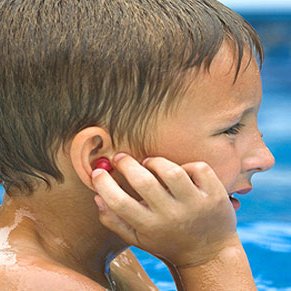Swimmers Ear
Otitis externa, or Swimmer’s Ear, is signified by the inflammation of the outer ear structures, including the ear canal and pinna. Typically caused by a bacterial infection or fungi, this condition commonly affects swimmers. The infection is most commonly a result of water becoming trapped in the ear canal. This may occur after bathing or showering, or from swimming. Swimmer’s Ear may cause the ear to itch or become red and inflamed, bringing a lot of pain with head movement or touching of the ear.
Because Swimmer’s Ear is an infection that can vary in severity, it is important for you to seek the services of your ENT doctor in Arlington, Dallas or Fort Worth immediately. When water is trapped in the ear canal, bacteria in that area may multiply and lead to a more severe infection. Your ENT doctor will be able to assess the infection and determine whether or not antibiotics or other solutions are required.
| Causes | Swimmer’s Ear is commonly caused by a germ called Pseudomonas aeruginosa. This germ is microscopic and cannot be seen with the naked eye, further complicating the chance of infection and irritation. Your ear, nose, and throat clinic in Arlington, Dallas or Fort Worth, Texas will be able to use specific instruments to assess and examine your ear canal. It should be noted that Swimmer’s Ear typically affects children and young adults, and it is an extremely painful condition that should be treated by your ENT doctor as soon as possible. Swimmer’s Ear is spread through contaminated water that finds its way into the ear canal. It most commonly occurs within several days of being immersed in contaminated water or placing objects that have been contaminated into the ear. |
| Symptoms | Mild to moderate pain is perhaps the most common symptom of Swimmer’s Ear and is often aggravated by tugging the outer ear. Please contact your ENT doctor if you are experiencing those symptoms or any of the following:
|
| Treatment | If caught at an early stage, treatment for Swimmer’s Ear will include an intricate cleaning of the ear canal by your ENT doctor in Arlington, Dallas or Fort Worth. Eardrops that combat bacterial growth may also be prescribed, as well as a mild acid solution. More severe infections may be treated with antibiotics, as long as the eardrum has not been perforated. In some cases, your ear, nose, and throat doctor may prescribe pain medication. Follow-up appointments will be very important in order to adequately monitor the infection and effectiveness of the treatment methods. |
| Prevention | There are a handful of things you can do to protect your ear against Swimmer’s Ear, including:
|

